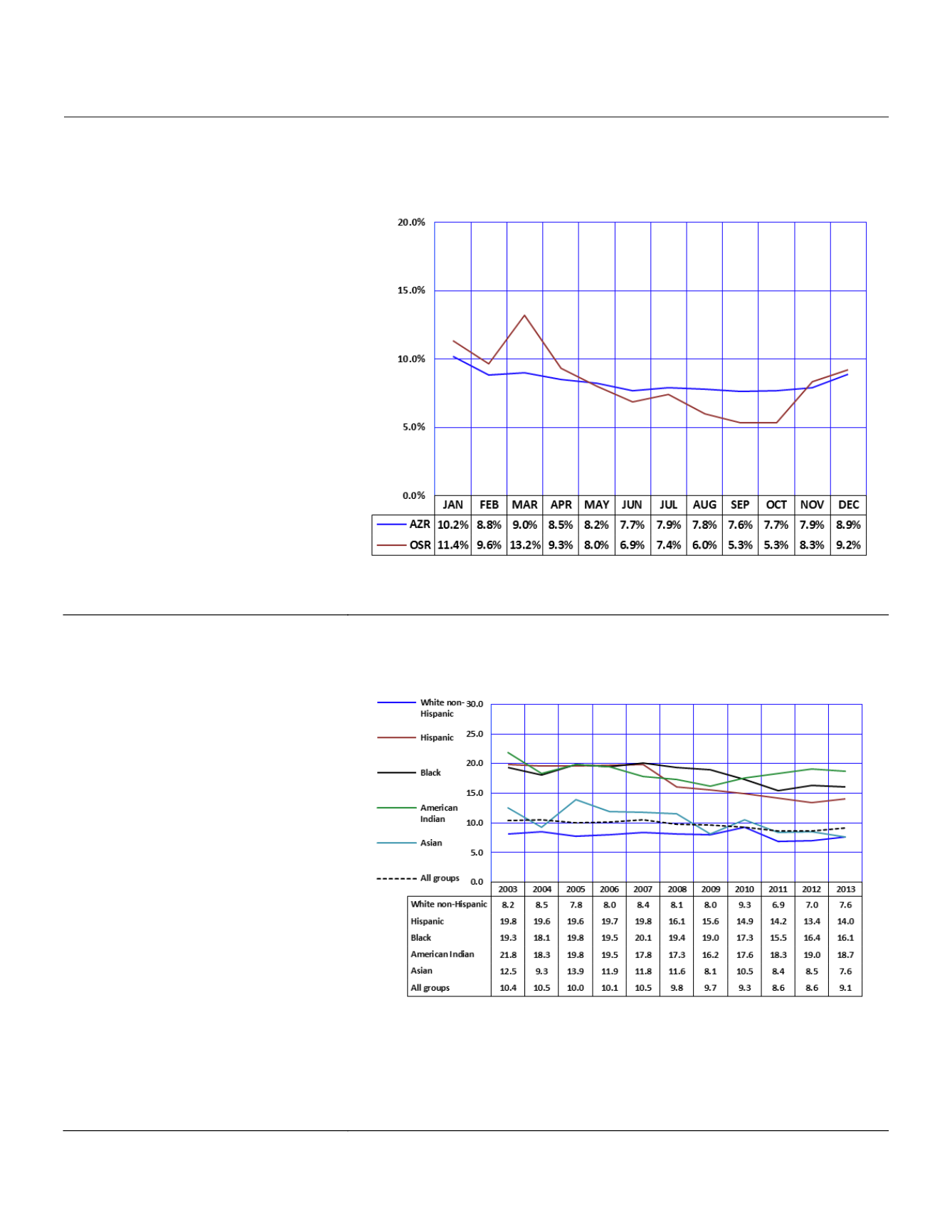
2A. TOTAL MORTALITY
If there was no monthly variation in
proportional contribution to total annual
deaths, 8.3 percent (100/12) of deaths
should occur monthly. However, when the
monthly distribution of resident deaths is
examined, January (10.2 percent), March
(9.0 percent), December (8.9 percent),
February (8.8 percent), and April (8.5
percent) were higher in 2013 from the
expected
value
(
Figure
2A-3
).
September, June, October, August, July,
and November were the months with the
lowest proportional contributions to the
total annual deaths among Arizona
residents.
The majority of the 2,103 non-residents
who died in Arizona during 2013 did so
during March, January, February, and
December. September was the month
with the lowest proportional contribution
(5.3 percent) to the annual death total
among out-of-State residents who died in
Arizona.
Figure2A-3
Percent Annual Deaths byMonthof Occurrence andResidence Status,
Arizona, 2013
Autopsies were reported as performed on
4,543 decedents, or 9.1 percent of the
deaths that occurred among Arizona
residents in 2013. From 2003 ? 2013, the
percentage of deaths for which autopsies
were reported varied from a high of 10.5
percent in 2004 and 2007 to a low of 8.6
percent in 2011 and 2012.
The percentage autopsied varies by the
decedent?s demographic characteristics.
By race/ethnicity (
Figure 2A-4
) the
percentage autopsied was lower for the
White non-Hispanic and Asian population
than for other groups. The prevalence of
autopsies was substantially greater
among American Indian, Black, and
Hispanic or Latino sub-populations. A
substantial portion of the differential in
the use of autopsy by race/ethnicity
reflects differences in the age andmanner
of death. For example, autopsies tend to
bemore common at younger ages and for
deaths by homicide, suicide, accidents,
and undeterminedmanner.
Figure2A-4
Percentage of Deaths forwhichAutopsieswereReportedby
Race/Ethnicity andYear, ArizonaResidents, 2003-2013
Arizona Health Status and Vital Statistics 2013
103


